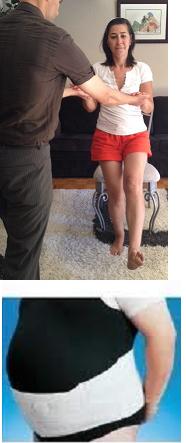Femoral Nerve: The Single leg sit-to-stand test
Reference:Suri P, et al The accuracy of the physical examination for the diagnosis of midlumbar and low lumbar nerve root impingement. Spine. 2011 Jan 1;36(1):63-73.
Step #1: The patient sits with one knee fully extended in order to avoid contacting the floor with that foot during testing. The PT holds the patient?s hands as a balance aid only.
Step #2: The patient is asked to stand up using only a single leg.
If the patient is able to stand up with little assistance, the test is ?ve.
If the patient is unable to stand up or applies a significant force through the PT?s hands, the test is +ve.
(To see a short video of this test please go to Youtube and search “APTEI”)
Clinical Relevance: If a patient reports of low back pain, burning thigh, tingling of the big toe, +ve femoral n. NDT, loss of patellar reflex, and a +ve single sit-to-stand test …it is extremely likely that they have a L3-4 neural compression.
So what can be done?
1. Repeated movements to determine if they can be centralized
2. Postural education ++
3. If unable to centralize, consider traction
4. Femoral n. mobilizations
5. If obese, consider an obesity belt to unload ?overhanging abdominals? that may be compressing the femoral nerve
6. Refer to an MD for an MRI & surgical consult
Posted on: July 05, 2012
Categories: Lumbar Spine


